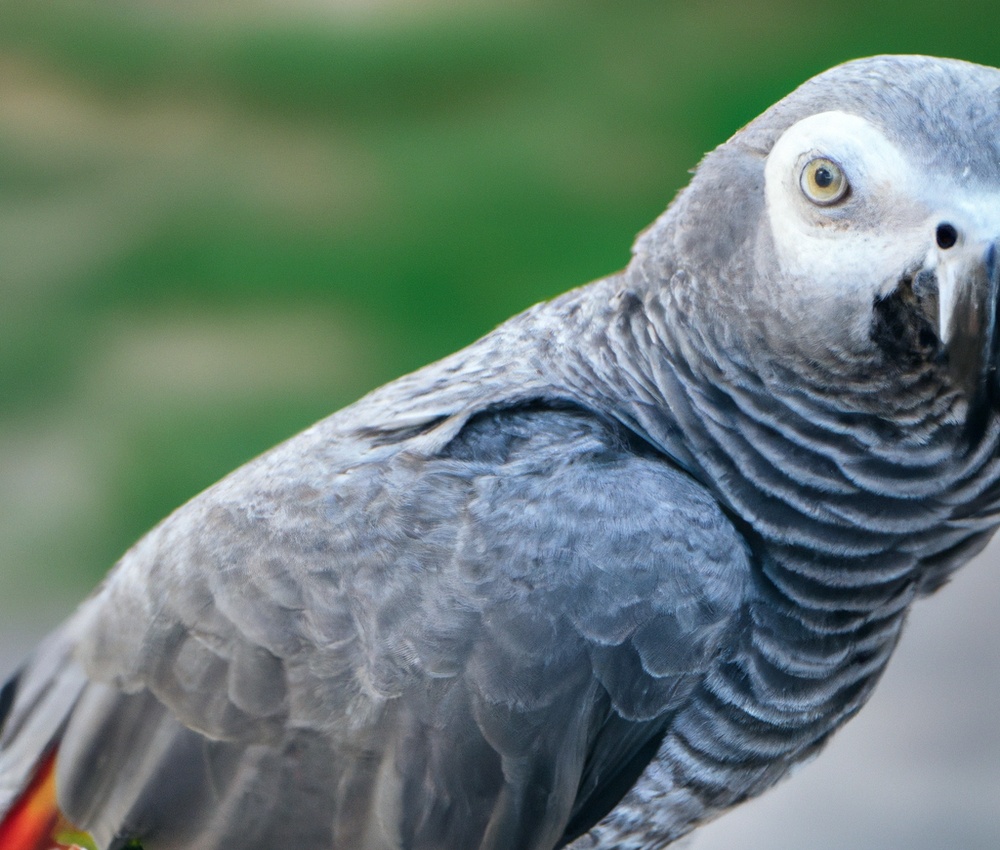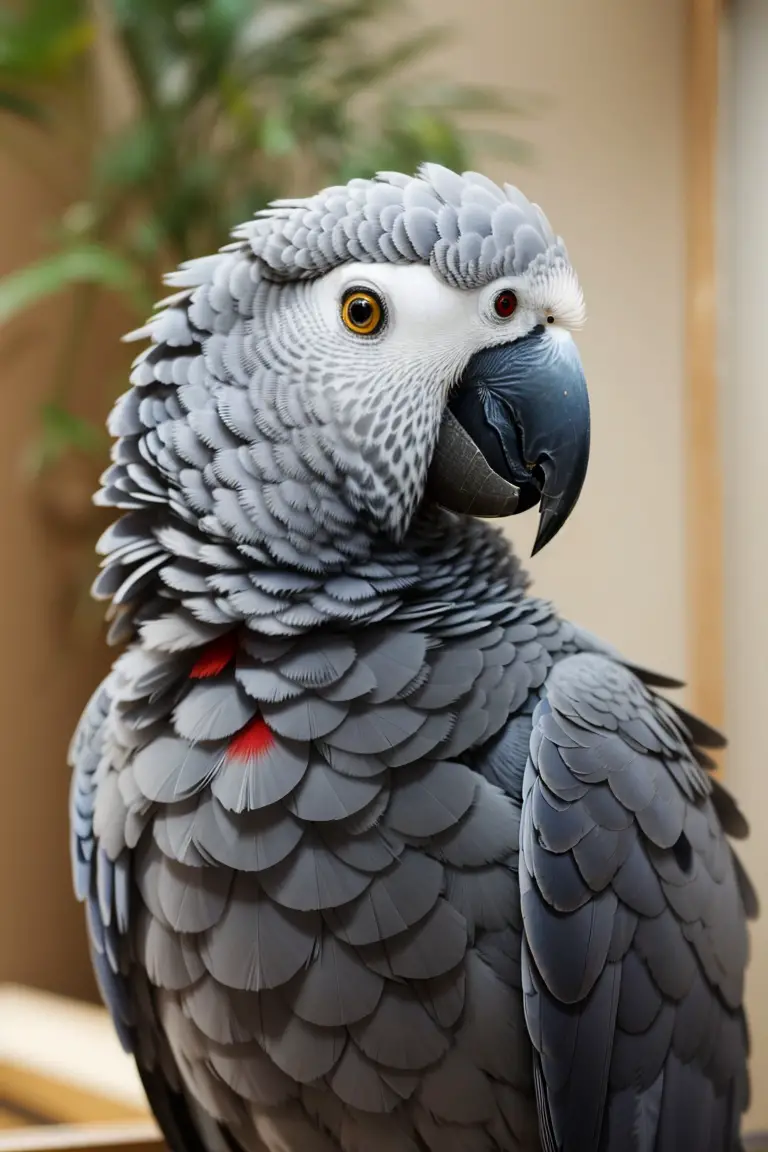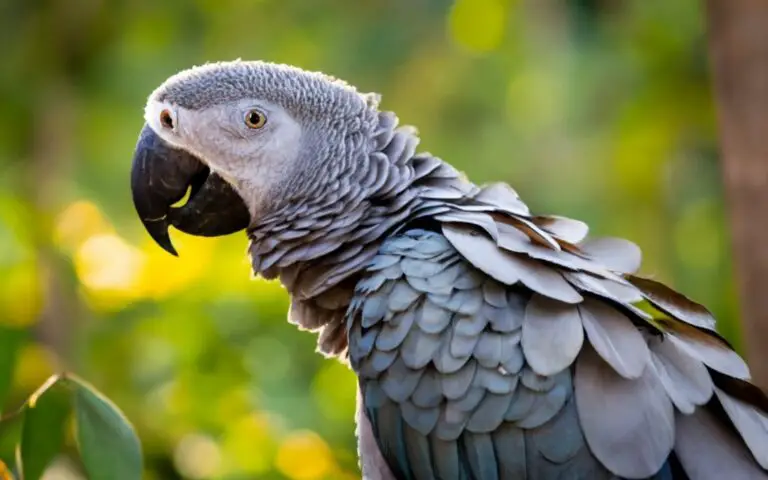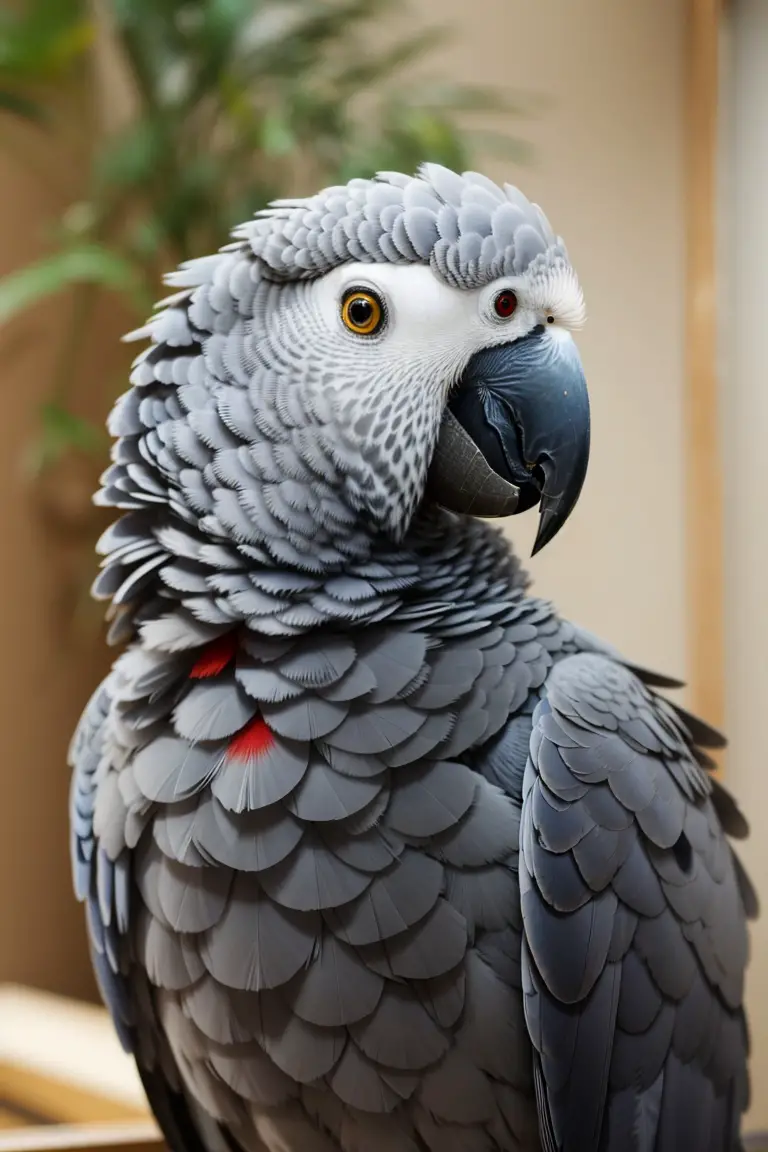How Do I Identify The Gender Of My African Grey Parrot?
Key Takeaways:
- Observe the size and color of the African Grey Parrot’s iris to determine its gender.
- Look for behavioral cues such as dominance or aggression in male birds, which can indicate their gender.
- Consult with a professional avian veterinarian to conduct DNA testing for a definitive answer on your parrot’s gender.
- Keep in mind that gender identification in African Grey Parrots may not always be straightforward and could require multiple methods for accurate determination.
Are you the proud parent of an African Grey Parrot?
If so, you may have found yourself wondering about your feathered friend’s gender.
Don’t worry, you’re not alone! Determining the gender of an African Grey Parrot can be challenging, but fear not, I’m here to help.
In this article, we will explore the physical and behavioral differences between male and female African Grey Parrots, as well as age-related changes to look out for.
If you’re unsure about the gender of your companion, keep reading to learn how you can unravel the mystery with confidence.
| Method | Accuracy | Difficulty |
|---|---|---|
| DNA Testing | High | Low |
| Surgical Sexing | High | High |
| Behavioral Indicators | Medium | Medium |
| Chromosomal Analysis | High | High |
Understanding the Basics of African Grey Parrots
African Grey Parrots are fascinating birds with complex behaviors and distinct physical features that can help you identify their gender.
Physical Differences between Male and Female African Grey Parrots
Male and female African Grey Parrots can be visually distinguished by a few physical differences.
Here are some key characteristics to look for:
- Size: Males tend to be larger than females, with a slightly bigger body and head size.
- Coloration: The plumage on the chest and head of male African Grey Parrots is often darker and more solid, while females may have a lighter or more mottled appearance.
- Eye color: Male African Grey Parrots usually have a lighter gray or light yellow iris, while females may have a darker or brownish iris.
- Beak shape: Males typically have a broader and larger beak, while females have a narrower and smaller beak.
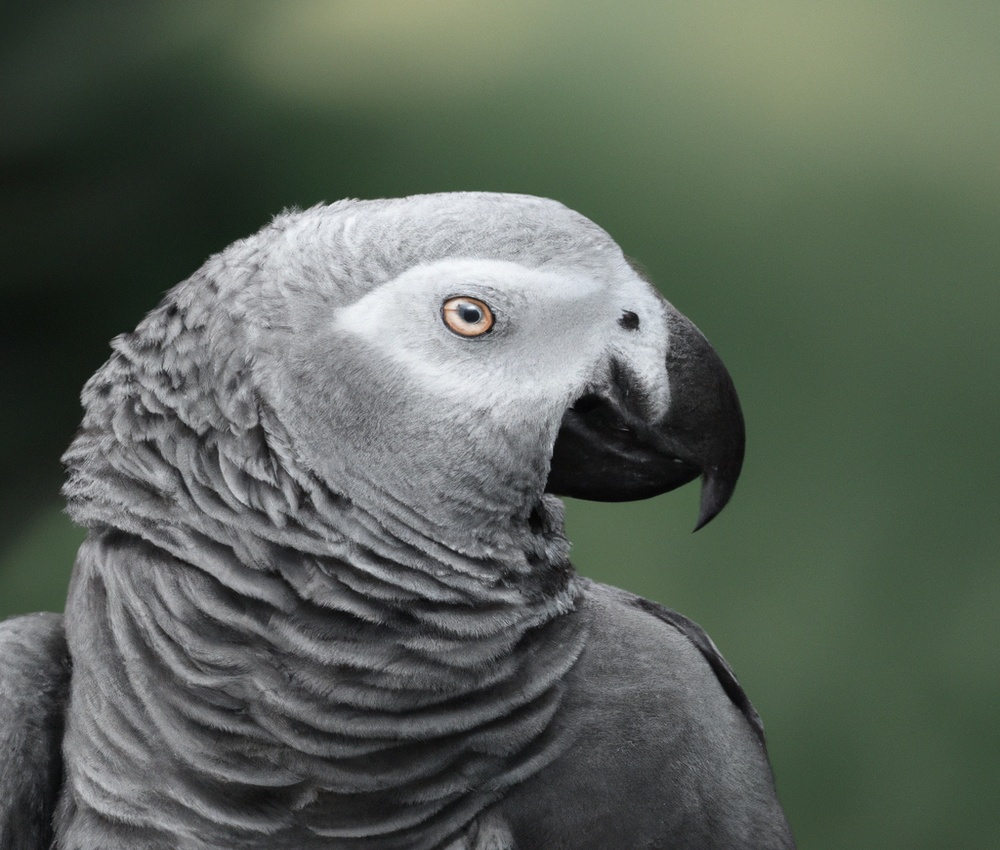
Behavioral Differences between Male and Female African Grey Parrots
Male African Grey Parrots tend to be more outgoing and extroverted than females.
They are often more vocal and tend to mimic speech more frequently.
Females, on the other hand, are generally quieter and more reserved.
They may not engage in as much vocal mimicry but still possess exceptional intelligence.
Males may also display more territorial behavior and aggression, while females are typically more social and cooperative.
It’s important to remember that individual bird personalities can vary, so these differences may not apply to every African Grey Parrot.
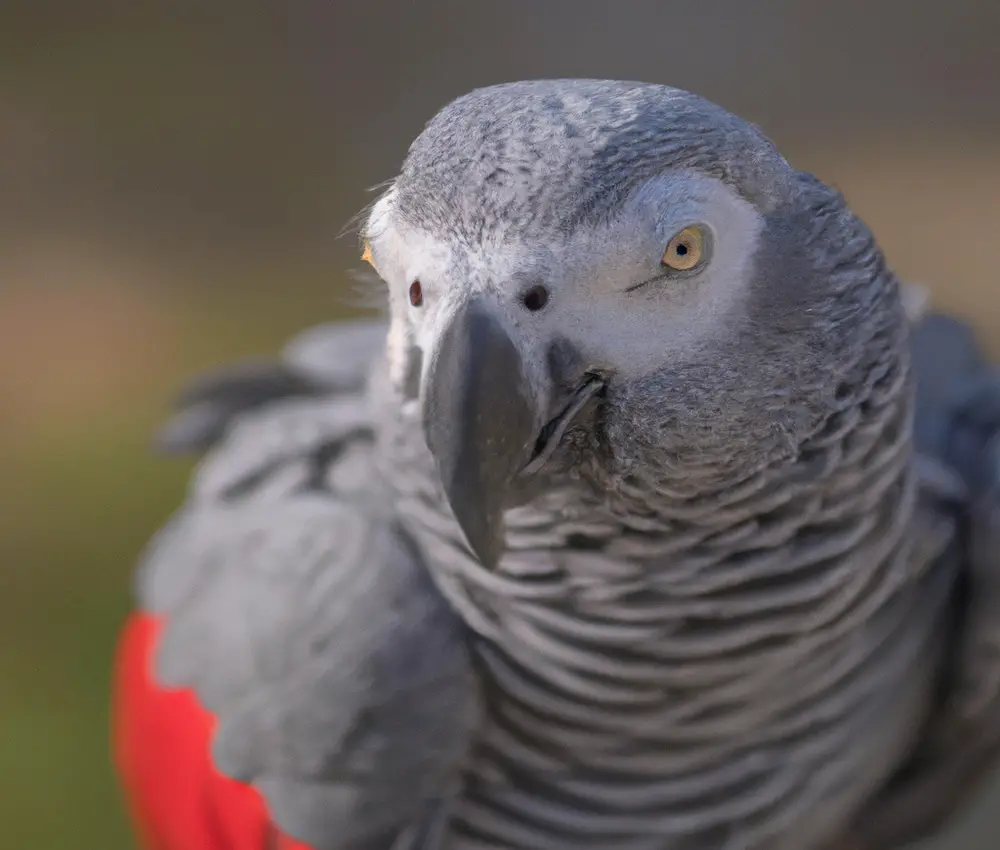
Observing Physical Characteristics
Observing physical characteristics can help you determine the gender of your African Grey Parrot.
Physical Characteristics of Male African Grey Parrots
Male African Grey Parrots have certain physical characteristics that can help you identify their gender. One important characteristic is the color of their feathers.
Male African Grey Parrots typically have a darker gray color all over their body, while females may have lighter gray feathers.
Another physical feature to look for is the size of their head and beak. Males tend to have a larger beak and a broader head compared to females.
Additionally, male African Grey Parrots often have a red or maroon colored tail, while females may have a tail with a more subtle color.
Size and Weight Differences
Size and weight differences can be helpful in identifying the gender of African Grey Parrots.
Here are some general observations:
- Size: Male African Greys tend to be larger than females, with an average length of 12-14 inches from beak to tail. Females usually measure around 10-12 inches.
- Weight: Males can weigh anywhere from 400-600 grams, while females usually range from 300-400 grams.
Keep in mind that these are general guidelines, and individual variations may occur.
Consult with a veterinarian or a bird expert for accurate identification.
Coloration and Feather Patterns
Coloration and feather patterns can provide valuable clues when trying to determine the gender of an African Grey Parrot. Males typically have darker coloration and more defined markings, particularly around the head and neck.
They may also have brighter feathers in certain areas.
Females, on the other hand, tend to have lighter coloration and less distinct patterns. Examining these physical characteristics can help you identify the gender of your African Grey Parrot.
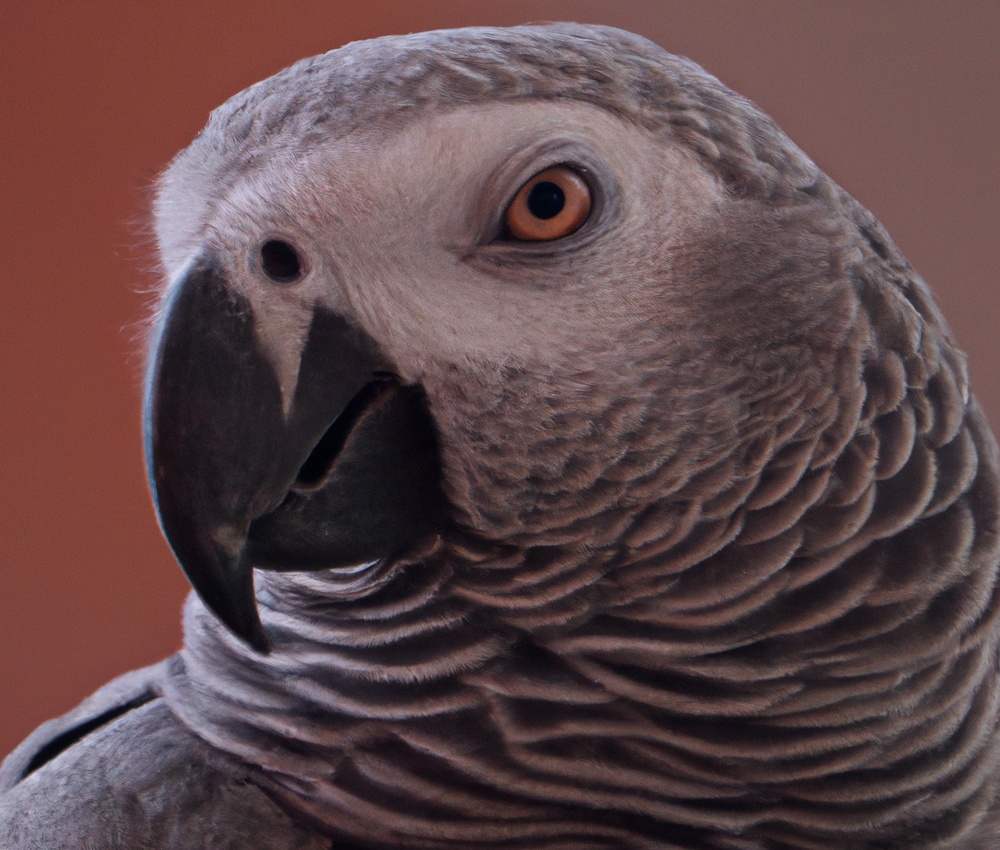
Shape of the Pelvic Bones
The shape of the pelvic bones is a reliable indicator of the gender of an African Grey Parrot.
Female parrots have wider, more rounded pelvic bones, while male parrots have narrower, more pointed pelvic bones.
To determine the gender of your parrot, you can ask an experienced avian veterinarian to perform a pelvic examination or have a radiograph taken.
This will provide a definitive answer and help you better understand your parrot’s needs and behavior.

Physical Characteristics of Female African Grey Parrots
Female African Grey Parrots have specific physical characteristics that can help you identify their gender.
One important feature to look for is the size of their beak: females tend to have a smaller beak compared to males.
Additionally, their heads may appear smaller and rounder, while their bodies are typically larger and more robust.
Female African Grey Parrots also tend to have a darker eye color, usually a deep brown or black.
These physical attributes can assist you in determining the gender of your African Grey Parrot.
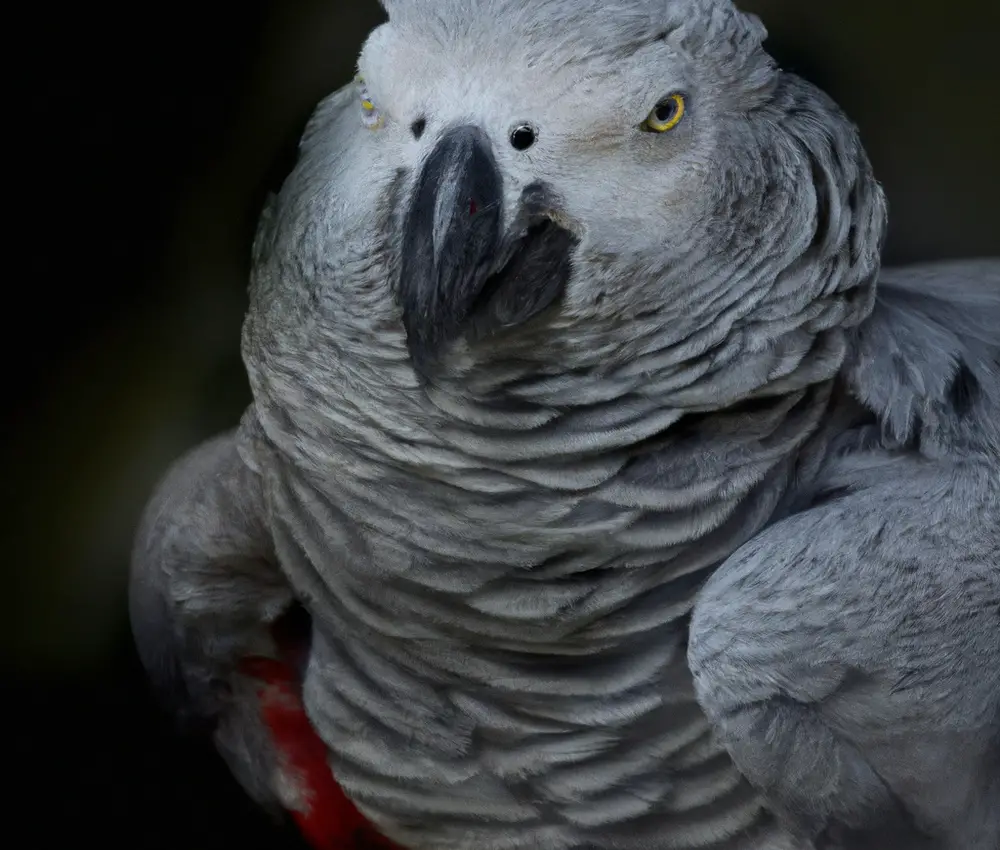
Size and Weight Differences
Size and weight differences can be helpful indicators when trying to identify the gender of an African Grey Parrot. Generally, male African Greys tend to be larger and heavier than females.
Males can weigh between 400-650 grams, while females typically weigh around 350-450 grams.
Additionally, males may have a larger head, beak, and overall body size in comparison to females. However, it is important to note that these differences are not always definitive, and other methods such as DNA testing may be necessary for an accurate determination.
Coloration and Feather Patterns
Coloration and feather patterns can be helpful indicators when trying to identify the gender of an African Grey Parrot. Here are some characteristics to look out for:
- Overall color: Male African Grey Parrots tend to have a darker overall plumage coloration compared to females. Males often display a richer shade of gray, while females may have a lighter, more diluted gray color.
- Eye color: The eye color of male African Grey Parrots is typically darker, often appearing deep black or dark brown. Females, on the other hand, may have lighter eye colors, such as light brown or reddish-brown.
- Tail feathers: Males usually have longer and more pointed tail feathers, while females have shorter and rounder tail feathers.
- Feather patterns: Some African Grey Parrots display slight differences in feather patterns. However, it’s important to note that these variations can vary among individuals and aren’t always reliable for determining gender.
Remember, these observations can help give you clues about the gender of your African Grey Parrot, but they aren’t foolproof methods. Consulting with a veterinarian or avian expert who specializes in parrots can provide a more accurate assessment.
Identifying Age-related Physical Changes
As your African Grey Parrot ages, you may notice certain physical changes that can help you determine its age. These age-related physical changes include the color of the feathers, the size of the beak, and the appearance of the eyes.
- Feather Color: Young African Grey Parrots have dark gray feathers that gradually lighten as they mature. Older birds tend to have a lighter shade of gray, usually with a silver or white coloration.
- Beak Size: The beak of a young African Grey Parrot is smaller and narrower compared to an adult. As they age, the beak becomes larger and stronger.
- Eye Appearance: Young African Grey Parrots have dark eyes, while older birds may develop light gray or pale yellow eyes as they mature.
- Overall Appearance: Older African Grey Parrots may start showing signs of ruffled feathers, bald patches, or discoloration on their plumage. These changes can also be indicators of aging.
Evaluating Behavioral Patterns
When trying to identify the gender of your African Grey Parrot, evaluating their behavioral patterns can be key.
Behavioral Traits of Male African Grey Parrots
Male African Grey Parrots have certain behavioral traits that can help you identify their gender. Here are some key characteristics to look out for:
- Size and Appearance: Male African Grey Parrots are generally larger in size compared to females. They often have a chunkier body and a broader, more pronounced head shape.
- Vocalization: Males tend to be more vocal and display a wider vocabulary repertoire. They may imitate various sounds and voices, including human speech, more frequently than females.
- Courtship Behavior: Male African Grey Parrots often engage in courtship behavior, such as bowing, puffing up their feathers, and dancing, to attract females.
- Dominance Display: Males may exhibit dominant behavior, fluffing up their feathers and stretching out their wings when they feel threatened or want to establish dominance in their territory.
- Feeding Habits: Male African Grey Parrots may be more assertive and proactive when it comes to claiming food. They may vocalize or use body language to express their desire to eat first.
Vocalizations and Wording
Vocalizations and wording are key indicators for determining the gender of your African Grey Parrot. Male African Greys tend to have a larger vocabulary and may imitate sounds and words more frequently.
They often have a knack for learning new words quickly.
On the other hand, female African Greys typically have a smaller vocabulary and may exhibit less intense or frequent vocalizations. By paying attention to their verbal abilities and vocalizations, you can gather valuable insights into the gender of your parrot.
Biting and Aggression
Biting and aggression are common behaviors in African Grey parrots.
These behaviors can be concerning, but understanding their causes and addressing them appropriately is important.
- Biting: Parrots may bite due to fear, stress, or frustration. It’s crucial to avoid reacting harshly, as this can reinforce the behavior. Instead, try to determine the underlying cause and address it. Training and socialization can help reduce biting incidents.
- Aggression: African Grey parrots can display aggression towards humans or other birds. This is often a territorial response or a sign of stress. Creating a stimulating and enriching environment, providing plenty of mental and physical exercise, and positive reinforcement training can help reduce aggression.
Territory Marking
Territory marking is a common behavior in African Grey Parrots.
It is their way of claiming and defending their space.
Here are some signs of territory marking:
- Frequent vocalizations like screaming or loud calls.
- Wing-flapping or raising their feathers when someone approaches their cage.
- Aggressive behavior towards people or other pets near their territory.
- Marking their cage or perching areas with droppings or regurgitated food.
If you notice these behaviors, it’s important to respect their space and provide them with plenty of mental and physical stimulation to alleviate any territorial tendencies.
Courtship Displays
Courtship displays in African Grey Parrots are a fascinating behavior to observe. These displays are usually performed by males to attract a potential mate.
They may include behaviors like bowing, fluffing feathers, raising wings, head bobbing, and vocalizations.
These displays serve as a way to communicate their interest and readiness to mate. It is important to observe and understand these behaviors when trying to identify the gender of your African Grey Parrot.
Behavioral Traits of Female African Grey Parrots
Behavioral Traits of Female African Grey Parrots Female African Grey Parrots exhibit several distinct behavioral traits that can help you identify their gender.
- Smaller body size: Female African Greys tend to be slightly smaller in size compared to males.
- Quieter vocalizations: Females generally have a softer and less frequent vocalization pattern compared to their male counterparts.
- Less territorial behavior: Female African Greys are usually less territorial and display less aggressive behavior towards other birds or humans.
- Nurturing and nesting behavior: Females have a natural instinct for nesting and caring for their young. They may show interest in nesting materials and exhibit nesting behavior.
- More reserved temperament: In general, female African Greys tend to have a more reserved and cautious temperament.
Vocalizations and Wording
Vocalizations play a significant role in identifying the gender of African Grey Parrots.
Males often produce clear and precise speech, while females tend to have a higher-pitched voice and may mimic sounds subtly.
Males usually articulate words more accurately, whereas females may have a wider vocabulary.
Pay attention to the specific wording choices, as males may prefer direct words and phrases, while females might employ softer, more nurturing language.
Keep these vocal and linguistic differences in mind when determining the gender of your African Grey Parrot.
Brooding and Maternal Instincts
Brooding is a natural behavior exhibited by female African Grey Parrots. They may show signs of wanting to nest, such as collecting feathers or exhibiting more territorial behavior.
Maternal instincts can also be seen in their interactions with other birds or objects they consider as their chicks.
These behaviors can indicate that your parrot is a female.
Courtship Receptivity
Courtship receptivity refers to the behavior an African Grey Parrot exhibits when it is ready to mate.
Some common signs of courtship receptivity in these parrots include vocalizations, wing flapping, dancing, regurgitating food, and displaying their feathers.
It is important to note that both male and female African Grey Parrots can show courtship behavior.
To identify courtship receptivity, observe your bird’s behavior and look for these signs.
However, remember that not all African Grey Parrots will exhibit courtship behavior, so it may not be a reliable method for determining gender.
Seeking Professional Assistance
DNA Testing for Gender Identification
DNA testing is a reliable method for identifying the gender of your African Grey Parrot. It involves taking a small sample of your parrot’s DNA, usually through a blood sample or feather plucking.
This sample is then sent to a reputable laboratory for analysis.
The laboratory will compare the DNA sample to known genetic markers to determine whether your parrot is male or female. DNA testing is considered the most accurate and definitive method for gender identification in parrots.
It can help you understand your parrot’s needs and behaviors better.
Benefits and Drawbacks of DNA Testing
DNA testing for determining the gender of African Grey Parrots has both benefits and drawbacks.
Benefits:
- Accurate identification: DNA testing provides a reliable and accurate method of determining the gender of your parrot.
- Early detection: DNA testing can be done at a young age, allowing you to know the gender of your parrot before sexual maturity.
- Breeding purposes: Knowing the gender of your parrot is crucial if you plan on breeding or pairing them with another parrot.
Drawbacks:
- Cost: DNA testing can be expensive, especially if you have multiple parrots that need to be tested.
- Stressful for the bird: The process of obtaining a DNA sample, such as a blood draw or feather plucking, can be stressful for the bird.
- Time-consuming: It may take some time to receive the results of the DNA test, which can delay your plans or decision-making regarding your parrot.
Finding a Reputable Avian Veterinarian
When looking for a reputable avian veterinarian, there are a few key things to keep in mind.
- Recommendations: Ask fellow parrot owners, breeders, or bird clubs for their recommendations. Hearing about positive experiences from others can be a great starting point.
- Specialty and Experience: Look for a veterinarian who specializes in avian medicine or has extensive experience working with birds. Birds have unique health needs, so it’s important to find a vet who understands their specific requirements.
- Certification and Credentials: Ensure that the veterinarian you choose is licensed and certified to practice avian medicine. This guarantees that they have the necessary knowledge and skills to care for your African Grey Parrot.
- Facility and Equipment: Visit the veterinary clinic or hospital to assess their facilities and equipment. A well-equipped clinic with bird-specific tools and technologies demonstrates a commitment to avian care.
- Communication and Trust: A good avian veterinarian will take the time to listen to your concerns, answer your questions, and provide clear explanations about your parrot’s health. Trust and communication are crucial in building a positive veterinary-client relationship.
Frequently Asked Questions
Can gender be determined by the bird’s behavior alone?
Can gender be determined by the bird’s behavior alone?
No, it is not possible to determine the gender of an African Grey Parrot based solely on its behavior.
While there may be some behavioral cues that are more common in one gender than the other, they are not definitive indicators.
To accurately determine the gender of an African Grey Parrot, a DNA test or endoscopy performed by a veterinarian is necessary.
These tests can provide a definitive answer and remove any guesswork.
What is the most reliable method to determine the gender of an African Grey Parrot?
The most reliable method to determine the gender of an African Grey Parrot is through DNA testing.
This involves collecting a small blood sample or feather follicles and sending them to a specialized laboratory for analysis.
The DNA test can accurately identify the bird’s sex by examining its chromosomes.
It is a quick and accurate method that eliminates any guesswork or uncertainty.
Other visual cues, such as the color of the bird’s iris or size differences, are not reliable indicators of gender.
DNA testing is the best way to ensure an accurate identification.
At what age can the gender of an African Grey Parrot be determined?
The gender of an African Grey Parrot can only be determined through DNA testing. This can be done by collecting a small blood sample from the bird.
There is no specific age requirement for DNA testing, so it can be done at any time.
It is a simple and painless procedure that can provide accurate results. However, it is important to note that physical characteristics alone cannot determine the gender of an African Grey Parrot, as they do not have external differences like some other bird species.
DNA testing is the most reliable method for identifying the gender of your African Grey Parrot.
Can African Grey Parrots’ physical characteristics change as they age?
Yes, the physical characteristics of African Grey Parrots can change as they age. Here are a few things to keep in mind:
- Feather coloration: Young African Grey Parrots have a lighter, more vibrant plumage compared to older birds. As they age, their feathers often darken and may develop more defined patterns.
- Eye color: The eyes of young African Grey Parrots are typically a lighter shade, often ranging from yellow to orange. Over time, the eye color can become darker, turning to a deep gray or black.
- Beak and nails: As African Grey Parrots age, their beaks and nails may become thicker and more pronounced. These changes are a natural part of the aging process and do not necessarily indicate any health issues.
Final Verdict
Identifying the gender of African Grey Parrots requires a careful observation of both physical characteristics and behavioral patterns. By understanding the differences in size, coloration, and pelvic bone shape, one can make an educated guess about the bird’s gender.
Additionally, paying attention to vocalizations, nesting behaviors, and courtship displays can also provide important clues.
Consulting an avian veterinarian or DNA testing can provide a more definitive answer. Remember, seeking professional assistance is crucial to ensure accuracy.
By understanding these methods and seeking the right help, you can confidently determine the gender of your African Grey Parrot.

